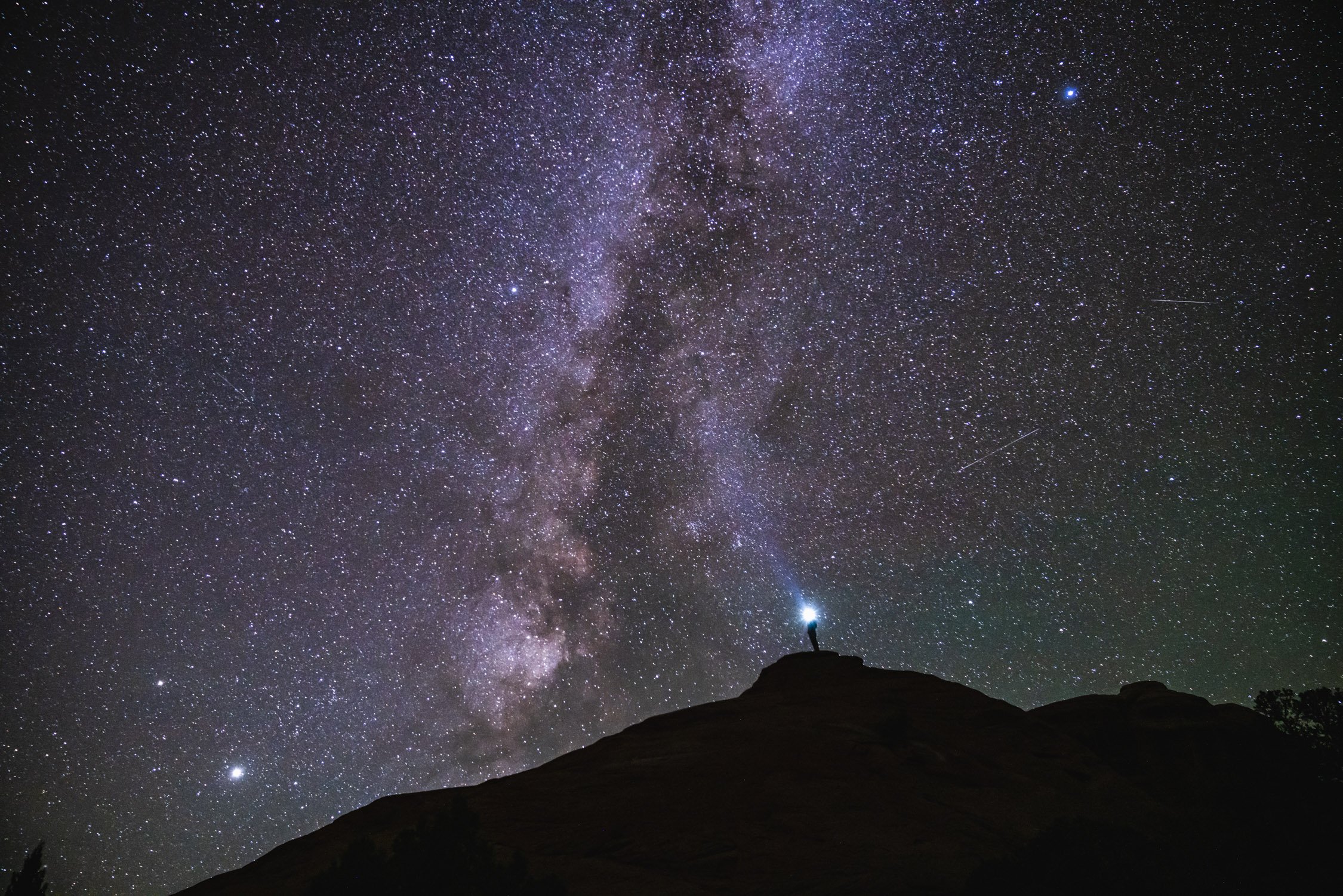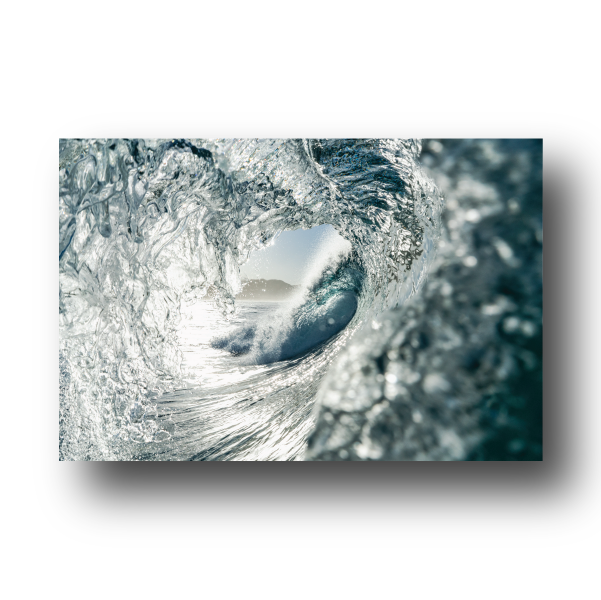12 Pro Tips for Beginner Stargazers
Stargazing is a captivating way to connect with the cosmos and explore the wonders of the night sky. Whether you're a newcomer to the night sky or looking to enhance your celestial observations, these 12 pro tips will help you make the most of your stargazing experience. From understanding basic astronomical concepts to selecting the best viewing locations, these tips will guide you as you embark on your journey through the stars.
Soaking in the Milky Way while under the dark skies of the Moab area. Photo by Dalton Johnson
Background:
Stargazing has been a source of fascination and inspiration for centuries, with cultures around the world using the night sky for navigation, storytelling, and scientific discovery. From ancient astronomers to modern astrophysicists, people have long been intrigued by the stars and planets. Today, stargazing is accessible to everyone, offering a serene and awe-inspiring way to experience the universe. With the right knowledge and tools, anyone can enjoy the beauty and mystery of the night sky.
12 Pro Tips for Beginner Stargazers:
1. Choose a Dark Sky Location
To get the best stargazing experience, find a location away from city lights and light pollution. Dark sky sites, such as national parks or rural areas, offer clearer views of celestial objects. Use light pollution maps or apps to find suitable stargazing spots near you. The darker the sky, the more stars and celestial features you'll be able to see.
2. Check the Weather
Clear skies are essential for stargazing, so always check the weather forecast before heading out. Look for nights with minimal cloud cover and low humidity. Avoid stargazing during or immediately after rain, as moisture in the air can reduce visibility. Planning your stargazing sessions around favorable weather conditions ensures a more enjoyable experience.
3. Use a Star Map or App
Star maps and stargazing apps are invaluable tools for identifying constellations and celestial objects. Many apps offer interactive features that help you locate stars, planets, and constellations based on your location and the current date. Familiarize yourself with basic constellations and major stars to enhance your understanding of the night sky.
4. Allow Your Eyes to Adjust
Your eyes need time to adjust to darkness for optimal stargazing. Spend at least 20-30 minutes in the dark before starting your observations. Avoid looking at bright lights or using your phone's screen, as this can ruin your night vision. Once your eyes adjust, you'll be able to see fainter stars and details more clearly.
5. Bring Binoculars or a Telescope
While the naked eye can reveal many wonders of the night sky, binoculars or a telescope can enhance your view. Binoculars are portable and easy to use, making them ideal for beginners. Telescopes offer more detailed views of celestial objects but require more setup and practice. Choose the right equipment based on your interest and level of commitment.
6. Learn to Identify Constellations
Constellations are a great starting point for beginner stargazers. Learning to identify key constellations helps you navigate the night sky and locate other celestial objects. Start with prominent constellations like Orion, Ursa Major, and Cassiopeia. Use star maps or apps to assist in recognizing and locating these star patterns.
7. Observe the Moon and Planets
In addition to stars, the Moon and planets are fascinating targets for stargazing. The Moon's phases offer different viewing experiences, from craters and mountains to lunar eclipses. Planets such as Jupiter, Saturn, and Mars can be visible at different times of the year. Check planetary visibility charts to know when and where to observe these celestial bodies.
8. Understand Light Pollution
Light pollution affects stargazing by obscuring the visibility of stars and other celestial objects. Familiarize yourself with different types of light pollution, such as skyglow, glare, and light trespass. Take measures to minimize light pollution in your viewing area, such as using red LED lights and avoiding direct lighting.
9. Stay Warm and Comfortable
Stargazing often involves spending extended periods outdoors, especially during colder months. Dress in layers and bring blankets or reclining chairs to stay warm and comfortable. Pack snacks and hot drinks to make your stargazing session more enjoyable. Staying comfortable ensures you can focus on the night sky without distractions.
10. Capture Your Stargazing Moments
Consider photographing the night sky to preserve your stargazing experiences. Basic astrophotography can be achieved with a smartphone or a camera with manual settings. Use a tripod to reduce camera shake and experiment with long-exposure settings to capture stars, constellations, and even the Milky Way. Capturing images of the night sky allows you to share your experiences and review your observations later.
11. Join a Stargazing Group
Connecting with other stargazers can enhance your learning experience and provide valuable insights. Join local astronomy clubs, attend stargazing events, or participate in online forums. Engaging with a community of fellow enthusiasts offers opportunities to share knowledge, ask questions, and enjoy group observations.
12. Be Patient and Enjoy the Process
Stargazing is a practice that requires patience and curiosity. The more you observe the night sky, the more you'll learn about its patterns and phenomena. Take your time to enjoy the process, appreciate the beauty of the cosmos, and marvel at the wonders of the universe. Each stargazing session is an opportunity for discovery and awe.
The Milky Way going crossing behind Bonsai Rock in Lake Tahoe. Photo by Dalton Johnson
Stargazing is a rewarding and accessible hobby that allows you to explore the mysteries of the night sky. By following these 12 pro tips, you’ll be well-prepared to enjoy clear views of stars, planets, and other celestial wonders. Embrace the journey of discovery, and let the beauty of the cosmos inspire you. With patience and practice, you’ll find stargazing to be a fulfilling and enchanting experience.











